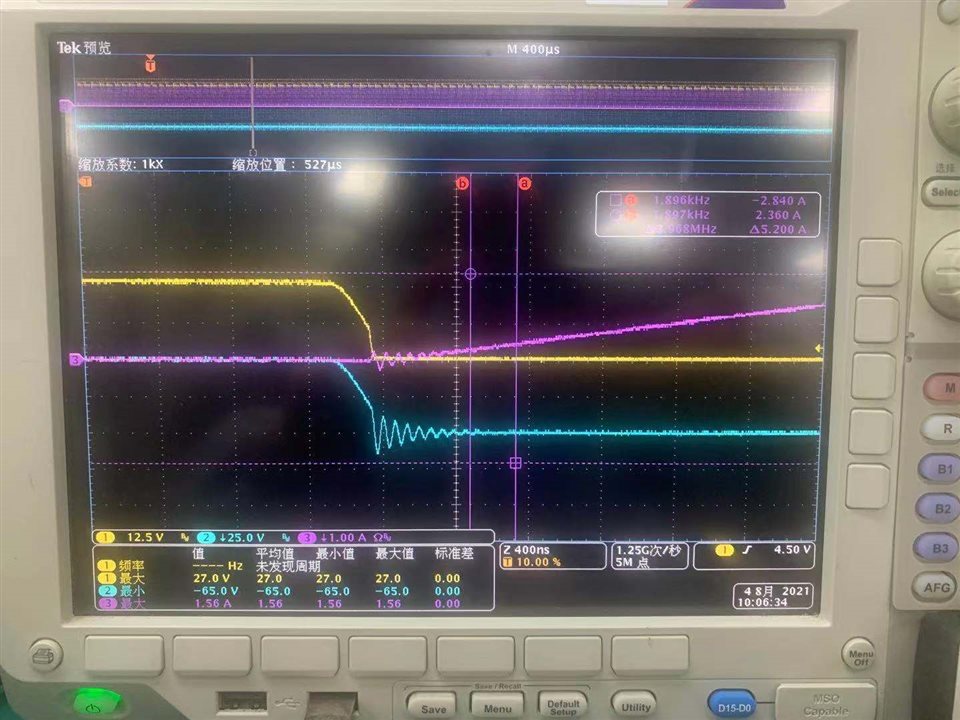Hi team,
My customer is evaluating LM25184-Q1 in their new gen platform. Could you please kindly help comment how to improve below oscillations?
1. The oscillation of secondary diode turning on (in blue)


2. current overshoot at the beginning of switch conduction period (in purple)

One more question is, what is the SW turning on and off time of LM25184-Q1? Will this influence the oscillation?
Thanks,
Scarlett

